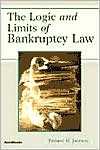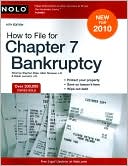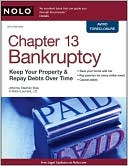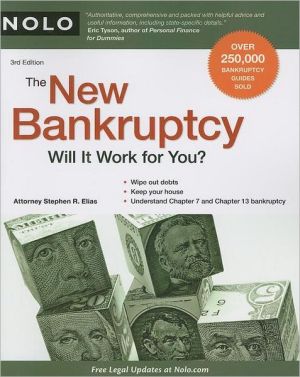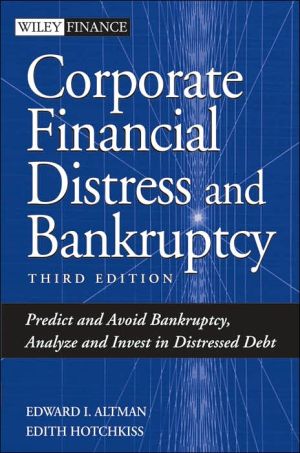Logic and Limits of Bankruptcy Law
This book sets forth a careful analysis of the fundamentals of bankruptcy law. It provides a keen insight into the subject. The author's premise is that there is an intellectual coherence that underlies bankruptcy law and that its first or underlying principles are few and elegant. Bankruptcy law can be used to keep firms in operation, and bankruptcy law inevitably touches other bodies of law. These principles can then be developed by defining their potential operation in the existing social,...
Search in google:
As headlines about cash-rich corporations filing for Chapter 11 are appearing more and more frequently, bankruptcy law has come under sharp public scrutiny. Critics feel that irresponsible corporations and individuals may be using the law unfairly. In this clearly written book, legal scholar Thomas H. Jackson identifies the underlying principles of bankruptcy law and develops an economic/psychological analysis of its main problems—a framework that permits him to view the field as a whole rather than as a collection of disparate policies and historical artifacts.Dealing first with the use of bankruptcy to adjust creditors' relations among themselves, Jackson shows that individual creditors will attempt to recover as much of the bankrupt firm's assets as they can. But to maximize the value of the assets, the creditors must act collectively to apportion them according to the priority of entitlements that existed before the bankruptcy.This is a claim with sweeping implications, and Jackson not only supports it convincingly but examines in some detail the various consequences of adopting it. He takes up several of the most controversial issues in bankruptcy policy today, including the treatment in bankruptcy of collective labor agreements and the recognition of unmatured tort claims of the kind involved in the Manville bankruptcy. His thoughtful analysis arrives at results that are consistent with his economic framework but that espouse no single political ideology.Turning then to the right of a financial fresh start for debtors who are not firms but human beings, Jackson thaws on recent ideas in psychology to explain why the right exists and why it cannot be waived.He thus provides a comprehensive scheme for evaluating the principal features of the existing bankruptcy system and for comparing them with past and future alternatives. The book will be of keen interest not only to the specialist but also to those who want to know more about the institution of bankruptcy and its place in our legal system.
Introduction: The Two Roles of Bankruptcy Law11The Role of Bankruptcy Law and Collective Action in Debt Collection72Determining Liabilities and the Basic Role of Nonbankruptcy Law203Refining Liabilities: The Basic Trustee Avoiding Powers of Section 544684Determining the Assets Available for Distribution895Executory Contracts in Bankruptcy: The Combination of Assets and Liabilities1056Prebankruptcy Opt-Out Activity and the Role of Preference Law1227Running Bankruptcy's Collective Proceeding1518Timing the Bankruptcy Proceeding: The Problems of Proper Commencement1939Reconsidering Reorganizations20910The Fresh-Start Policy in Bankruptcy Law22511The Scope of Discharge and Exempt Property253Index to Bankruptcy Code Sections281General Index283
